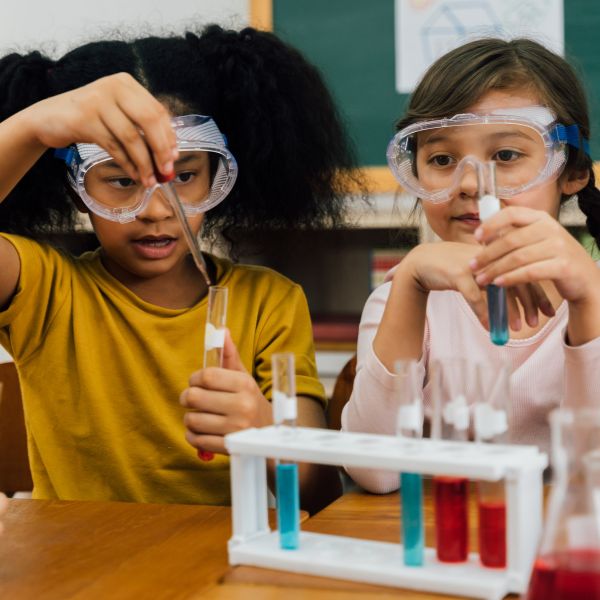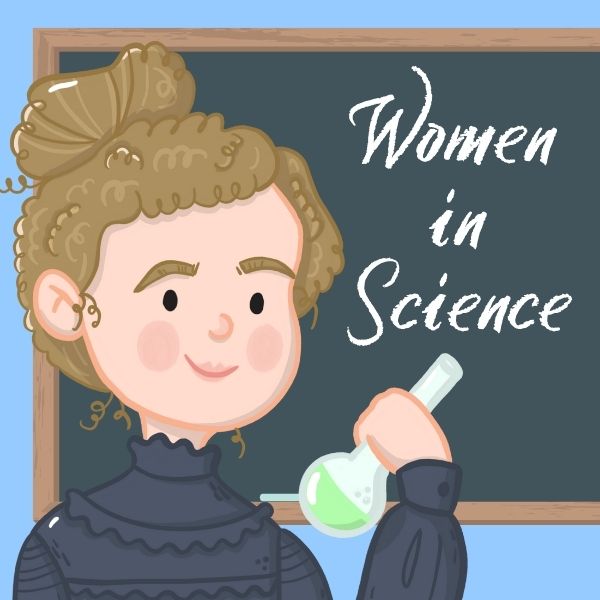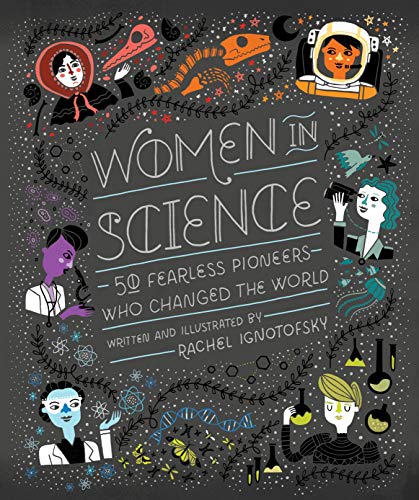If you’re anything like me, you might find the phrase ‘female scientist’ a bit weird. After all, a scientist is a scientist regardless of sex, right? But one thing is for sure, traditionally females have been underrepresented in STEM careers (science, technology, engineering, and maths).
As educators, parents, or others who work with young people, we have a responsibility to help all children reach their potential and help them explore the opportunities available to them.
The importance of introducing a range of female scientists to students
When linking the work of scientists to the curriculum, representation is so important. Here’s why:
Breaking down stereotypes
Girls (and boys!) need to see examples of women in all areas of scientific study to help break down stereotypes of who can ‘do’ science. Some students may have misconceptions about particular areas of science e.g. when they picture an astronaut or a plane engineer, are they male or female?
Building confidence
When girls see people who are like them succeeding in scientific fields, it can encourage them to believe in their own abilities and pursue their interests. By fostering a classroom environment that celebrates female scientists, teachers contribute to the development of a generation of confident and empowered young women who feel capable of making their mark in any scientific field.
Inspiring stories
Some scientists may have had to overcome all sorts of challenges to achieve what they did. These might have included not having access to formal education, financial constraints, or prejudice/not being taken seriously because of their gender. It’s so important to recognise the struggles of early female scientists and the value that their work has contributed to what we know today.
Encouraging curiosity
Female scientists have made groundbreaking contributions across various disciplines, from astronomy and physics to biology and chemistry. Exposing students to these diverse role models can spark curiosity and interest in fields they may not have considered before.

Inspiring female scientists to know about
These are some amazing female scientists past and present that you could introduce to your students. I’ve organised them by subject area to help you find those that link best with your curriculum.
Space
Dr. Mae Jemison: The first Black woman to travel to space as an astronaut with NASA, Jemison is also a physician, engineer, and entrepreneur.
Dr. Ellen Ochoa: The first Hispanic woman to travel to space, Ochoa is also a physicist and former director of the Johnson Space Center.
Helen Sharman: A chemist who was the first British woman in space. She was also the first woman to visit the Mir space station in 1991.
Wang Zhenyi: 18th-century Chinese astronomer, mathematician, and poet who made significant contributions to the understanding of lunar eclipses.
Human biology
Dr. Rosalind Franklin: A British biophysicist whose work was critical to the discovery of the structure of DNA, though she did not receive credit for it until after her death.
Physics
Marie Curie: Polish-born French physicist known for her work on radioactivity. She won the Nobel Prize twice (the first woman to win one).
Geology/ Paleontology
Mary Anning: Pioneering early paleontologist whose work informs much of what we know about prehistoric life today.
Etheldred Benett: A British geologist and paleontologist known for her contributions to the early understanding of fossils and stratigraphy.
Catherine Joséphine ‘Katia’ Krafft: French volcanologist with degrees in physics and chemistry, known for her extensive work in the field of volcanology alongside her husband, Maurice Krafft.
Mary Buckland (Morland): English paleontologist and illustrator. Mary was the wife of renowned geologist and paleontologist William Buckland who wrote the first account of a dinosaur fossil.
Animal Science
Dr. Jane Goodall: a British primatologist and conservationist known for her study of chimpanzees in Tanzania.
Maria Sibylla Merian: A German naturalist and scientific illustrator known for her pioneering work in entomology and botanical art. She was one of the first naturalists to observe insects directly in their natural habitats and document their life cycles through detailed illustrations.
Joan Beauchamp Proctor: British herpetologist and pioneering zoologist known for her work on the behaviour and care of reptiles and amphibians.
Plants and Fungi
Dr Beryl B. Simpson: Award-winning American botanist working in research on flowering plants.
Beatrix Potter: Best known for her children’s books about animals, Beatrix Potter also studied fungi. She drew fungi and fungal spores with great accuracy.
Barbara McClintock: American geneticist and plant scientist known for her pioneering work on the genetics of maize (corn).
Health
Florence Nightingale: British nurse, social reformer, and statistician, best known for her pioneering work in nursing and healthcare reform during the Crimean War. Nightingale implemented strict sanitation practices in her hospital and significantly improved hygiene leading to a decreased mortality rate in soldiers.
Environment
Rachel Carson: American biologist, conservationist, and author, best known for her influential book “Silent Spring,” published in 1962. Carson’s work played a pivotal role in raising awareness about the environmental impact of pesticides.
Engineering
Beatrice Shilling: British aeronautical engineer and motorcycle racer, known for her contributions to aviation during World War II. Shilling played a crucial role in addressing a technical issue that affected the performance of the engines used in British fighter planes.
Dr Aprille Ericsson-Jackson: Aerospace engineer known for her work at NASA. She became the first African American woman to receive a Ph.D. in mechanical engineering from Howard University
Where can you find resources to inspire girls in science?
International Day of Women and Girls in Science
Every February, the United Nations celebrates International Day of Women and Girls in Science. If you plan to get involved, you can visit the website here for resources and further information. https://www.un.org/en/observances/women-and-girls-in-science-day
‘A scientist just like me‘ (Primary Teaching Trust)
Introduce your students to the diverse range of people working in science via short slideshows. There’s a search function to filter scientists by gender, ethnicity, disability, and job type. An excellent resource that will save you lots of research time! Visit A Scientist like Me here.
STEM Ambassadors
If you are in the UK, check out the STEM Ambassador programme. STEM Ambassadors are working scientists who volunteer their time to work with schools.
Recommend Reads
- Hardcover Book
- Ignotofsky, Rachel (Author)
- English (Publication Language)
- 128 Pages – 07/26/2016 (Publication Date) – Ten Speed Press (Publisher)
There’s also a version of the book above in postcard form:
- Ignotofsky, Rachel (Author)
- English (Publication Language)
- 100 Pages – 03/07/2017 (Publication Date) – Clarkson Potter (Publisher)
- Washington, Danni (Author)
- English (Publication Language)
- 120 Pages – 09/14/2021 (Publication Date) – Rockridge Press (Publisher)
- FUN AND EDUCATIONAL: This exciting card game lets children discover and match the women from history behind objects we use every day – from wind-shield wipers to disposable diapers – as well as the pioneers who changed lives through science and technology.
- INCLUDES A BOOKLET that details all the fascinating stories behind the inventions and their creators’ lives.
And lastly, my own book for children, A Girl Called Mary. I wrote this rhyming picture book to highlight the work of paleontologist Mary Anning, who lived and worked not far from where I live on the south coast of England. I found her story of trying to succeed in a male-dominated field in 1800’s Britain so inspiring. Her pioneering work is widely regarded as informing much of what we know about prehistoric marine life today.
- Waters, G.D. (Author)
- English (Publication Language)
- 30 Pages – 06/28/2019 (Publication Date) – Independently published (Publisher)
As an Amazon Associate, I earn from qualifying purchases.
Wonder at the World Resources
If you need classroom resources for studying fossil hunter Mary Anning, or Primatologist Jane Goodall, you can find them in my Wonder at the World store on TeachersPayTeachers:






